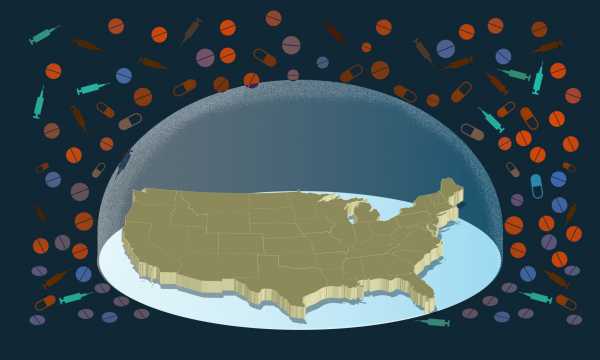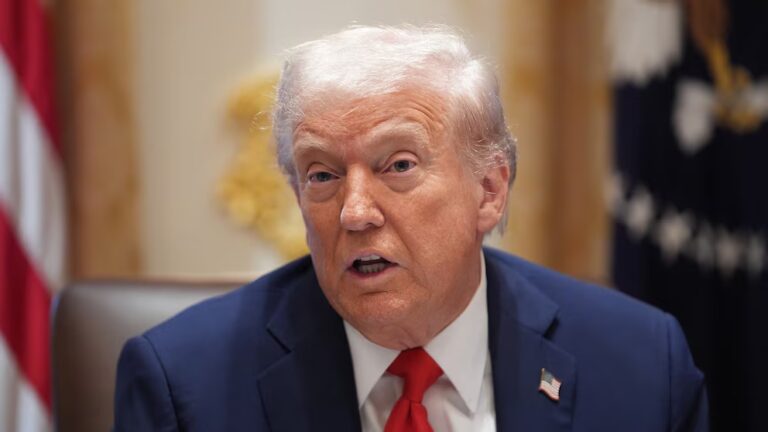
The opioid epidemic is the deadliest drug overdose crisis in US history — on track to kill more people over the next decade than currently live in entire American cities like Miami or Baltimore.
A new study, published in the American Journal of Public Health on Thursday by Stanford researchers Allison Pitt, Keith Humphreys, and Margaret Brandeau, tries to parse out how America can reduce the death toll. Using a mathematical model, the study brings together research and expert opinions to calculate the epidemic’s death toll and how different policy ideas can stem the toll.
First, a shocking number: 510,000. That’s a rough estimate of how many people will die over the next decade due to opioid-related causes, which include overdoses and other causes of death tied to opioids, such as HIV infections from sharing syringes. But the researchers caution that the number, as with other estimates in the study, are fuzzy and subject to change — given that this is, after all, trying to predict the future.
“The trend that we’ve seen in the last year would suggest that there’s reason to believe that [the death toll] could be even greater, really,” Pitt told me, referring to data showing a rise in opioid overdose deaths in 2017. “But it’s really hard to say.”
The good news is the study found America can do some things to reduce the death toll.
The bad news is it implied the US has to go much further than policymakers have so far — dramatically scaling up proven addiction treatment modalities, needle exchanges, and access to the opioid overdose antidote naloxone. And while pulling back excess opioid painkiller prescriptions is another important piece, the study suggested that some of the ways policymakers have proposed doing that may be downright harmful, at least over a 10-year window.
The study looked at potential solutions
The study emphasized that there is no one silver bullet for the opioid crisis (as experts have told me before). There are some policies that have a bigger impact than others, but none by themselves get close to ending the crisis on their own.
“No single policy is likely to substantially reduce deaths over 5 to 10 years,” the researchers wrote.
The model, for example, estimated that wider availability of naloxone could reduce opioid-related deaths by 21,200 over 10 years; that medication-based treatments for opioid addiction like buprenorphine and methadone would reduce deaths by 12,500; and that reductions in painkiller prescribing for acute pain would reduce deaths by 8,000.
Again, the researchers cautioned that the individual numbers here aren’t too important. Since this is a model making predictions, these figures are not totally accurate. Instead, what’s important is the overall story that they tell us.
On the harm reduction and treatment front, the model suggested that several interventions — more naloxone, more needle exchanges, more medication-based treatment, and more psychosocial treatment — would have unambiguously good effects, reducing both heroin and painkiller deaths over the next 10 years. But none of them would have giant effects on their own, with potentially hundreds of thousands of deaths still taking place even with the interventions.
Where it gets a little messier is the prescription painkiller control side. With these policies, the model suggested that some interventions could actually increase the number of deaths within five and, in fewer cases, 10 years.
How? To explain that, some context is needed: The opioid epidemic first began as doctors prescribed more opioid painkillers, leading to a proliferation of the drugs that, in turn, led to misuse and addiction not just among patients, but people who bought and stole the drugs from patients as well. Over time, though, some of these painkiller users have shifted to heroin and illicit fentanyls, a class of synthetic opioids, in pursuit of a cheaper, better high (since the illicit drugs are more potent and cheaper than painkillers on the street market) or as they lost access to painkillers.
The model accounts for the latter scenario: When some people are cut off from painkillers, they will go to heroin or fentanyls to continue using opioids. So while these people may not die from painkillers, they may overdose and die on heroin or fentanyl. (For the purposes of the model, it counts fentanyl deaths as “heroin deaths.”)
The question, then, is whether policy interventions prevent enough painkiller deaths to make up for the other deaths they likely cause.
To this end, the researchers’ model found that over a 10-year window, reductions in chronic pain prescribing, rescheduling painkillers to increase restrictions on them, and prescription drug monitoring programs actually increase opioid-related deaths by as much as the tens of thousands — because they increase heroin deaths more than they cut painkiller deaths.
But some other interventions on the prescribing front fare better: reductions in acute pain prescribing, reductions in prescribing for transitioning pain, drug reformulation to make opioids less prone to misuse, and more excess opioid disposal. All of these policies seem to prevent more deaths than they cause in a 10-year window (although not always in a five-year window), based on the model.
Some of the downsides to these policies could be mitigated by synergies with other proposals. If addiction treatment is more available to painkiller users, for instance, some of them will be more likely to get on treatment and less likely to turn to illicit opioids if cut off painkillers — preventing what could have become a heroin death under the model. The individual estimates for each policy, though, don’t fully account for those synergistic effects (although the model is capable of taking at least some synergies into account, Pitt said).
Researchers concluded that a “portfolio” of options will be needed to make a significant impact on the crisis, since, based on their estimates, each policy would on its own reduce opioid-related deaths by single-digit percentages, at best.
For example, while only boosting addiction treatment would be “good and all-around beneficial, that’s not going to be sufficient to stem the epidemic,” Pitt said. “So we do believe that some strategy pulling back on prescription pills will be necessary,” as well as other approaches.
What matters here is what Humphreys has described as the “stock and flow.” On one hand, you have the current stock of opioid users who are addicted; the people in this population need treatment, or they will simply find other, potentially deadlier opioids to use if they lose access to painkillers. On the other hand, you have to stop new generations of people from potentially accessing and misusing opioids — or there will be a constant flow of new people with addiction.
So it’s not enough just to help people who are already addicted. It’s important to prevent people from getting addicted, too, in part by stemming the proliferation of painkillers.
As Humphreys put it, “In the history of the world, no one’s ever reversed an epidemic only by treating the sickest people on an individual basis. Imagine if we tried that with the flu epidemic or AIDS — just sit in the hospital and wait, and if people get in the hospital, then treat them.” He noted that the response to HIV/AIDS was far more thorough, focusing not just on improving treatments but also prevention efforts like better education on safe sex, condom distribution, and the establishment of needle exchanges.
Something similar should be tried with the opioid crisis, he argued: Treat people with an addiction and reduce the harm of drug use as much as possible, but also try to prevent the onset of addiction.
There are important limitations to the model
The model has big limitations. By the researchers’ admission, none of the individual numbers should be taken too seriously. No one can predict the future or how the crisis might change — just like few people predicted the sudden rise of fentanyls in recent years, making the illicit opioid market even deadlier.
The model is also bound by some assumptions about what’s realistic. For example, the study suggested that a 144 percent increase in access to medications would have more impact on deaths but is “probably not achievable.” So its reported estimates assumed lower increases in the availability of anti-addiction medications.
To put this in context, Humphreys has told me that, based on France’s experience, maximum expansion of access to opioid addiction medications like buprenorphine and methadone would likely reach about half of people with an opioid use disorder. That would still save a lot of lives, given that studies show that these medications reduce the mortality rate among opioid addiction patients by half or more and keep people in treatment better than other approaches.
But America is far from that. Based on federal data, about one in 10 people with a substance use disorder in 2016 got specialty treatment, and one in five people with an opioid use disorder got specialty treatment for nonalcoholic drugs. And only a fraction of those people got on medications — especially given that fewer than half of addiction treatment facilities offer opioid addiction medications to begin with.
To get half of the opioid addiction population on medications, then, America would need a percent increase in the hundreds. But even 144 percent is unrealistic in the US, given its history and based on the researchers’ modeling assumptions.
“If we broke away from past norm, we could push further,” Humphreys said. But, he cautioned, that’s “way beyond anything that our history suggests that we’d be willing to do.”
In a current context, experts have told me that the US would need to dedicate tens of billions of dollars more to really scale up treatment, harm reduction, and prevention to sufficiently deal with the opioid crisis. Congress, despite committing a few billion dollars here and there, has gotten nowhere close to that sum, and it’s hard to envision a scenario in which Congress suddenly allocates those tens of billions.
So the model offers a useful guide for how policymakers can respond to the opioid crisis. But it also shows that they have a very long way to go.
For more on the solutions to the opioid epidemic, read Vox’s explainer.
Sourse: vox.com






